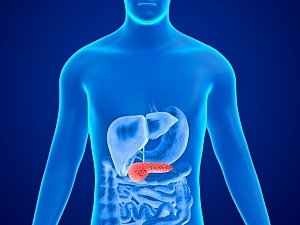Direct endoscopic necrosectomy (DEN) has become the standard first-line treatment for symptomatic pancreatic walled-off necrosis. The use of the Axios lumen-apposing metal stent (LAMS) system is increasingly popular for this procedure because of its bi-flanged design, large diameters, and lower risk of migration or occlusion. However, up to 10% of patients don’t respond and ultimately require surgery.
Ya-qi Zhai, MD, PhD, of the Division of Gastroenterology, Hepatology and Endoscopy at Brigham and Women’s Hospital and Chinese PLA General Hospital in Beijing, Marvin Ryou, MD, director of endoscopic innovation in the division, and Christopher C. Thompson, MD, MSc, director of endoscopy in the division, recently conducted the first study of which patients are most likely to respond to DEN with LAMS for pancreatic walled-off necrosis. In Gastrointestinal Endoscopy, they present a nomogram designed to help endoscopists with decision-making and prognostication.
Methods
The team retrospectively analyzed prospectively collected registry data. The 97 patients included underwent DEN with LAMS (Axios, Boston Scientific, Marlborough, MA) for walled-off necrosis between July 2014 and October 2018. The mean age was 54 years, 69% were male, and the mean Acute Physiology and Chronic Health Evaluation (APACHE) II score was 5.0.
Clinical Success
Clinical success was defined as both the resolution of symptoms and a decrease in the size of the necrotic cavity to ≤3 cm within a six-month period, without surgical intervention or death:
- 79 patients (81%) met this definition; the median duration from DEN to resolution was 31 days
- Of the 18 patients for whom the procedure was unsuccessful, 11 underwent video-assisted retroperitoneal debridement, five died, and two required surgery for severe adverse events (one perforation, one stent migration)
Predictors of Success
On multivariable analysis, three variables were independently associated with clinical outcomes after DEN. In order of the strength of their negative impact, they were:
- Paracolic gutter extension—OR, 0.08 (P=0.003)
- Percentage necrosis >50%—OR, 0.16 (P=0.022)
- Increasing APACHE-II score—OR, 0.70 (P=0.005)
Nomogram
The researchers used the three variables to create a nomogram. Points are allotted to each of the three factors separately, and the probability of success with DEN with LAMS increases with a greater number of total points. For example:
- The most favorable score (about 178 points) is found in a patient with <50% pancreatic necrosis, no paracolic gutter extension, and an APACHE-II score of 0; the chance of success would be 99%
- If the patient has an APACHE-II score ≥10 points, >50% necrosis and paracolic gutter extension, the total points would be <37.5, correlating with a 9% chance of success
- If only one of the two morphological predictors is present and the APACHE-II score is <8, the patient still has at least a 50% chance of success
- If the patient is stable (APACHE-II score ≤3), the success rate will be >88% even if one of the morphological risk factors is present
Applying the Nomogram
A larger ongoing study is applying the nomogram to an independent cohort. If the tool is validated, it will have multiple uses:
- Informing decision-making about the initial treatment of pancreatic walled-off necrosis
- Allowing early identification of patients at higher risk of nonresponse to DEN with LAMS
- Indicating when closer post-procedure patient monitoring is needed, with more expeditious surgical intervention as indicated
- Facilitating communication with patients during the informed consent process
- Aiding risk stratification in clinical trials
Additional Guidance
If it’s determined DEN with LAMS carries a high risk of failure, additional measures should be taken. This may include placement of a nasocystic catheter for ongoing lavage of the necrotic cavity, or external drainage. A step-up approach is preferred to direct surgical intervention in most cases.
